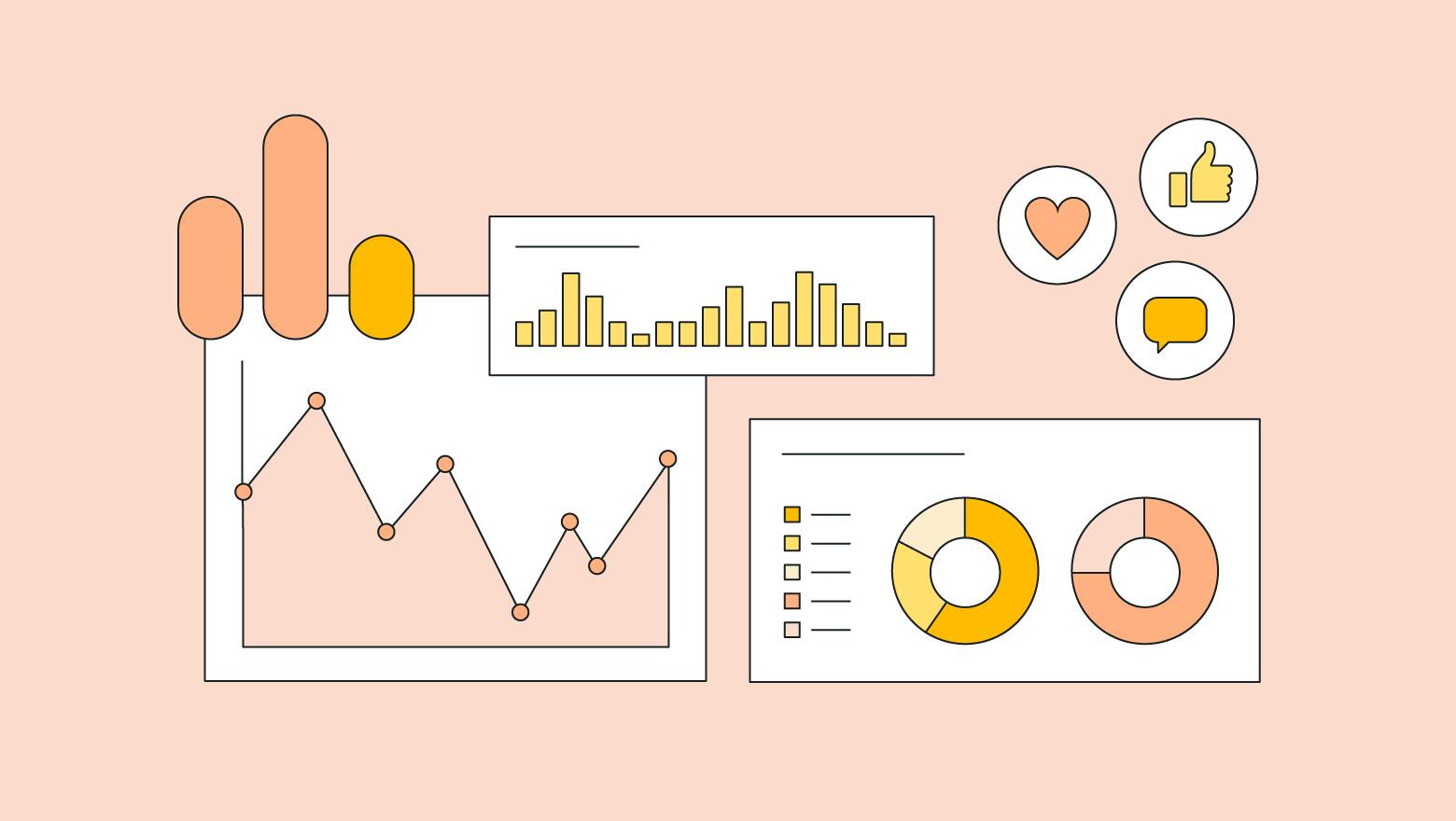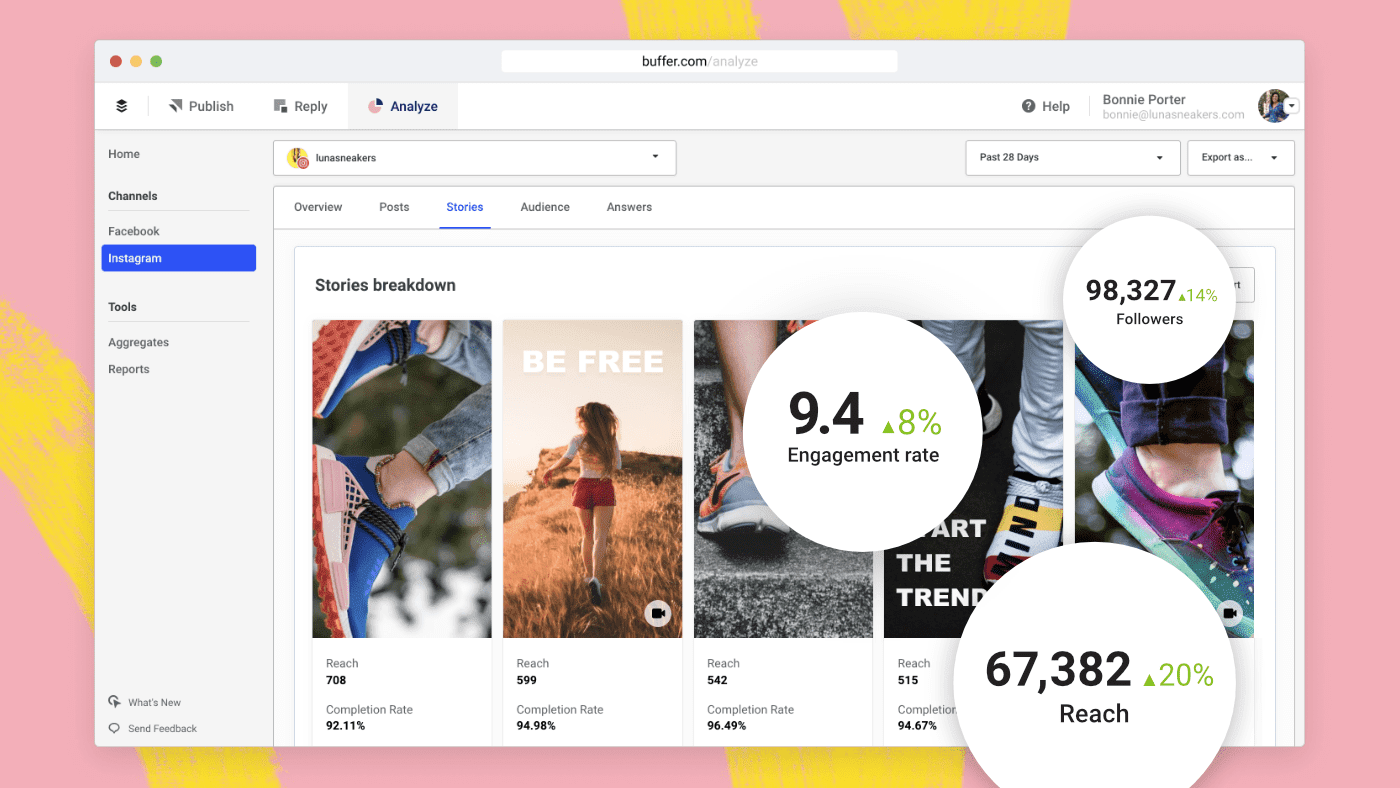In the fast-paced digital landscape, social media has become an indispensable tool for individuals and businesses alike. To thrive in this dynamic environment, it’s crucial to go beyond creating engaging content and actively analyze social media metrics. These metrics provide valuable insights into the effectiveness of your social media strategy, enabling you to refine your approach and achieve optimal performance.
Understanding Analyze Social Media Metrics

- Engagement Rate: The engagement rate measures the level of interaction your content receives. It includes likes, comments, shares, and other forms of engagement. A high engagement rate indicates that your audience finds your content interesting and is actively participating.
- Reach and Impressions: Reach measures the number of unique users who have seen your content, while impressions represent the total number of times your content has been displayed. Monitoring these metrics helps you understand the scope of your content’s visibility and its potential impact on a broader audience.
- Click-Through Rate (CTR): CTR is a critical metric that evaluates the effectiveness of your call-to-action. It calculates the percentage of users who clicked on a link or took a desired action. A high CTR implies that your content is compelling and encourages users to explore further.
- Conversion Rate: For businesses, conversion rate is paramount. It measures the percentage of users who take a desired action, such as making a purchase or filling out a form. Analyzing this metric allows you to assess the real-world impact of your social media efforts on your business goals.
Utilizing Analyze Social Media Metrics Tools
To streamline the analyze social media metrics, leverage analytics tools provided by platforms like Facebook Insights, Twitter Analytics, and Instagram Insights. These tools offer in-depth data on audience demographics, peak engagement times, and content performance. By utilizing these insights, you can tailor your content to resonate with your audience and maximize impact.
Measuring Content Effectiveness
- Content Type and Format: Evaluate the performance of different content types, such as images, videos, and infographics. Identify which formats resonate best with your audience and tailor your content strategy accordingly. Visual content often garners higher engagement, so experimenting with multimedia can be beneficial.
- Hashtag Performance: If you use hashtags, analyze their effectiveness. Track which hashtags generate the most visibility and engagement. This insight helps you refine your hashtag strategy and align it with trending topics relevant to your audience.
- Posting Frequency and Timing: Determine the optimal posting frequency and timing for your audience. Analyze when your audience is most active and adjust your posting schedule accordingly. Consistency is key, but finding the right balance ensures your content reaches a larger audience.
Responding to Audience Feedback
Engagement metrics go beyond numerical values; they include qualitative data as well. Monitor comments, direct messages, and mentions to gauge audience sentiment. Respond promptly and thoughtfully to foster a sense of community and build brand loyalty. Addressing both positive and negative feedback demonstrates authenticity and a commitment to customer satisfaction.
Iterative Improvement
Social media is an ever-evolving landscape, and what works today may not work tomorrow. Regularly revisit your social media strategy based on the insights derived from metrics. Experiment with new content ideas, monitor their performance, and iterate based on the feedback received.
Conclusion
In conclusion, analyze social media metrics is not just about numbers; it’s about understanding your audience and refining your strategy accordingly. Utilize the wealth of data available through analytics tools, measure content effectiveness, and respond actively to audience feedback. By adopting a data-driven approach, you can ensure that your social media efforts are not just active but also optimized for success in the digital realm.
If you’re ready to take your social media strategy to the next level and unlock the full potential of your online presence, consider requesting a demo from AIM Technologies. Our innovative solutions can help you seamlessly integrate analytics, streamline your workflow, and achieve unprecedented results.
FAQs
1. What is the importance of social media metrics analysis?
- Social media metrics analysis is crucial for evaluating the performance of your content and overall strategy. It provides insights into audience engagement, reach, and conversion rates, allowing you to refine your approach for optimal results.
2. Which social media metrics should I prioritize for analysis?
- Focus on key metrics such as engagement rate, reach, impressions, click-through rate (CTR), and conversion rate. These metrics offer a comprehensive view of your social media performance and help you understand how effectively you’re reaching and resonating with your audience.
3. How can analytics tools enhance social media analysis?
- Analytics tools, such as Facebook Insights and Instagram Insights, provide detailed data on audience demographics, content performance, and posting schedules. Leveraging these tools enables you to make informed decisions, identify trends, and tailor your strategy to better connect with your audience.
4. What is the significance of audience feedback in social media analysis?
- Audience feedback, including comments, direct messages, and mentions, provides qualitative insights into audience sentiment. Responding to feedback not only strengthens your online community but also helps you adapt your strategy based on real-time input from your audience.
5. How can I optimize my content for better performance?
- Analyze the effectiveness of different content types, experiment with hashtags, and determine the optimal posting frequency and timing. By understanding what resonates best with your audience, you can tailor your content strategy for maximum impact.




